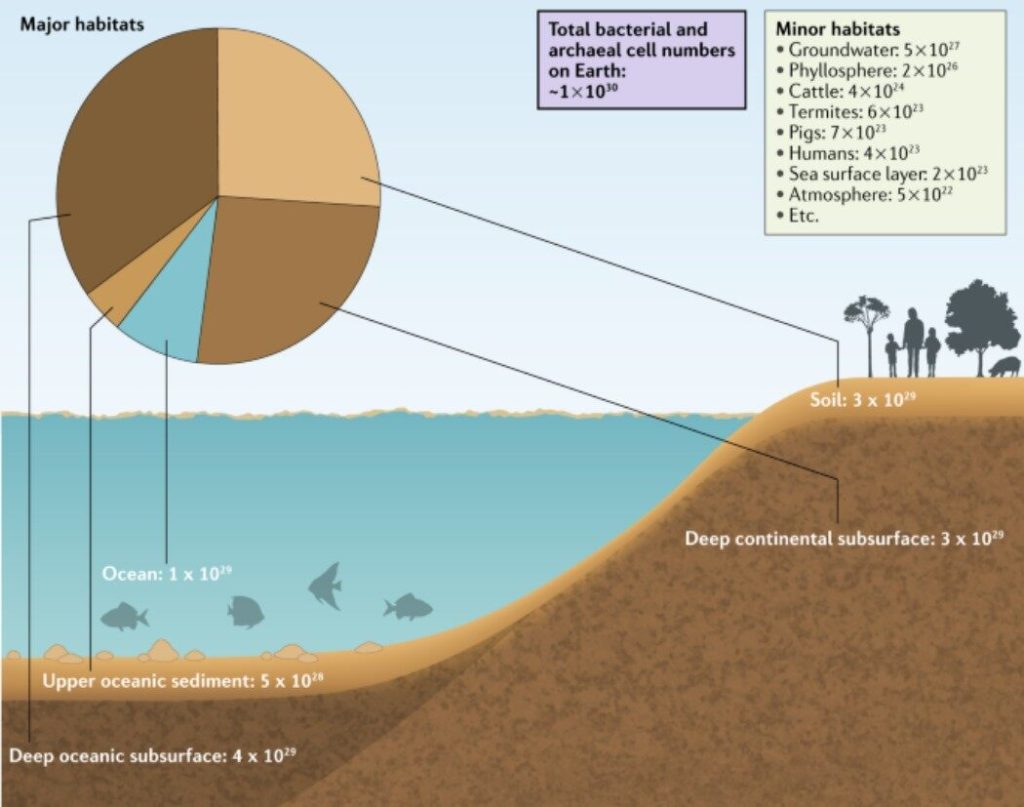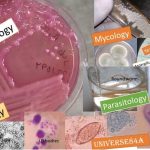Life on Earth is thought to have originated from the oldest single-cell archaea and bacteria.
Scientific evidence suggests that life began on Earth some 3.5 billion years ago. Since then, life has evolved into a wide variety of forms, which biologists have classified into a hierarchy of taxa. Some of the oldest cells on Earth are single-cell organisms called archaea and bacteria. Fossil records indicate that mounds of bacteria once covered young Earth. Some began making their own food using carbon dioxide in the atmosphere and energy they harvested from the sun. This process (called photosynthesis) produced enough oxygen to change Earth’s atmosphere.
Soon afterward, new oxygen-breathing life forms came onto the scene. With a population of increasingly diverse bacterial life, the stage was set for more life to form. There is compelling evidence that mitochondria and chloroplasts were once primitive bacterial cells. This evidence is described in the endosymbiotic theory. Symbiosis occurs when two different species benefit from living and working together. When one organism actually lives inside the other it’s called endosymbiosis. The endosymbiotic theory describes how a large host cell and ingested bacteria could easily become dependent on one another for survival, resulting in a permanent relationship.
Over millions of years of evolution, mitochondria and chloroplasts have become more specialized and today they cannot live outside the cell. Mitochondria and chloroplasts have striking similarities to bacteria cells. They have their own DNA, which is separate from the DNA found in the nucleus of the cell. And both organelles use their DNA to produce many proteins and enzymes required for their function. A double membrane surrounding both mitochondria and chloroplasts is further evidence that each was ingested by a primitive host. The two organelles also reproduce like bacteria, replicating their own DNA and directing their own division.
Mitochondrial DNA (mtDNA) has a unique pattern of inheritance. It is passed down directly from mother to child, and it accumulates changes much more slowly than other types of DNA. Because of its unique characteristics, mtDNA has provided important clues about evolutionary history. For example, differences in mtDNA are examined to estimate how closely related one species is to another.

Extremophiles: Photosynthetic fossilized cyanobacteria in a billion year old rock formation of Glacier National Park, Montana, USA.
Conditions on Earth 4 billion years ago were very different than they are today. The atmosphere lacked oxygen, and an ozone layer did not yet protect Earth from harmful radiation. Heavy rains, lightning, and volcanic activity were common. Yet the earliest cells originated in this extreme environment. Extremophiles archaea still thrive in extreme habitats. Astrobiologists are now using archaea to study the origins of life on Earth and other planets. Because archaea inhabit places previously considered incompatible with life, they may provide clues that will improve our ability to detect extraterrestrial life. Interestingly, current research suggests archaea may be capable of space travel by meteorite. Such an event termed panspermia could have seeded life on Earth or elsewhere.
The presence of archaea and bacteria changed Earth dramatically. They helped establish a stable atmosphere and produced oxygen in such quantities that eventually life forms could evolve that needed oxygen. The new atmospheric conditions calmed the weather so that the extremes were less severe. Life had created the conditions for new life to be formed. This process is one of the great wonders of nature.


